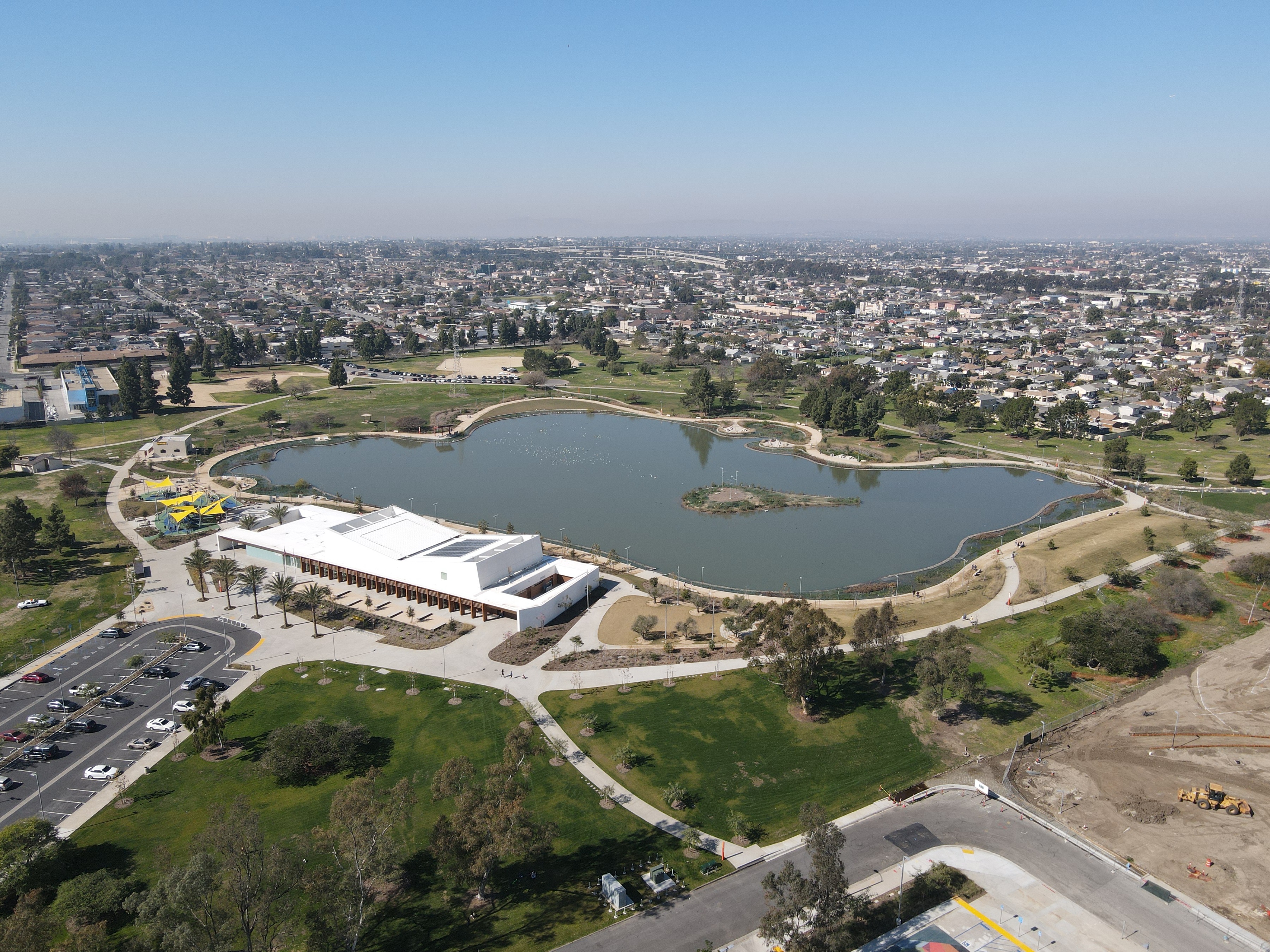Earvin Magic Johnson Park Revitalization Phase 1A
Award
Sustainable Engineering Project
Description
AHBE|MIG, Paul Murdoch Architects (PMA), PACE Advanced Water Engineering and CWE Engineers in collaboration with the Los Angeles County Development Authority (CDA), Los Angeles County Department of Parks and Recreation, and Los Angeles County Public Works (PW)—created a 21st century park that addresses how Southern California might implement the capture and reuse of our stormwater runoff and adds a much-needed amenity to an underserved community.
Earvin “Magic” Johnson (EMJ) Park, the largest open space in South Los Angeles, is an highly complex project and intersects many of today’s environmental, social, and public policies issues. Originally an oil processing site, the Park was bought by the County of Los Angeles as an extremely contaminated site in the middle of one of most politically active communities in the last century - the Willowbrook District of South Los Angeles.
The 120-acre park combines new recreation amenities with green infrastructure. The project includes a new community event center, a lakeside community loop trail with picnic areas and scenic viewpoints, a destination children’s play area, outdoor classrooms, and California Native landscapes.
To minimize potable water use, the Park was re-engineered through collaboration with the CDA and PW to provide a sustainable new water source using a unique stormwater management system to recycle the runoff from the 375-acre watershed. This system captures and treats runoff (dry and wet weather flows) to improve water quality. The stormwater runoff is then directed to a biofiltration area in the form of mitigated wetland surrounding one of the park’s two lakes. The filtered stormwater water fills the lake and is then recirculated to irrigate the Park. In addition, the wetland creates a habitat for birds, insects, and other urban wildlife.
This project is a true asset to the community for recreation, gathering, and mental and physical health. The lake and surrounding landscape have been restored and offer a beautiful respite for the public. Finally, and perhaps most importantly, the lake at Earvin “Magic” Johnson Park now can be used as an example of sustainability for parks throughout Southern California. The project demonstrates that the latest technology in stormwater treatment systems has miniaturized, allowing for the treatment of urban watersheds to become localized. This technology, coupled with the existing lakes, allows Los Angeles neighborhoods to capture, store, treat and recycle water and act as a catalyst for urban greening and meaningful outdoor space. Earvin “Magic” Johnson Park shows that aging lakes can be revitalized into great urban parks that not only provide beauty and recreation but also become part of the urban infrastructure.
Branch
